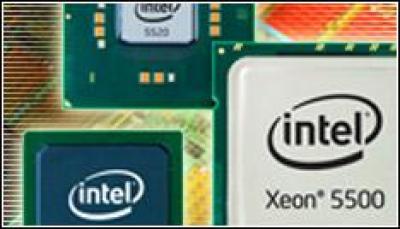Intel Announces Record First Quarter Amid Business Recovery

Intel generated $2.4 billion in profits on $10.3 billion in revenues in a record first quarter
Intel’s financial numbers soared in a first quarter that saw the chip maker aggressively roll out products and corporate spending begin to pick up.
Intel generated $10.3 billion in the first three months of 2010, a 44 percent jump over the same period last year, when the global recession was in full swing, company officials reported on 13 April. Profits came in at $2.4 billion (£1.5bn), a whopping 288 percent over the first quarter in 2009.
In a conference call with analysts and reporters after the numbers were released, Intel CEO Paul Otellini said the change over a year was significant. The first three months of 2009 saw the economy hitting its depths, Otellini said. Now, he said, “the industry is nearly fully recovered.”
Otellini said Intel, which owns an 80 percent share of the worldwide microprocessor market, said the consumer space continued to drive the industry’s recovery, noting the high demand for mobile devices, such as laptops, and higher-end PCs.
In addition, the long dormant commercial space seems to be showing signs of life, he said. “We’re also seeing signs of corporate spending improving,” Otellini said.
The first quarter saw a host of new processing platforms come into both the PC and server markets from not only Intel, but also Advanced Micro Devices and IBM.
For Intel, it started at the Consumer Electronics Show, with the roll out of more of its 32-nanometer Core i3, i5 and i7 chips. During the quarter, Intel also launched its much-delayed Itanium 9300 “Tukwila” processor for high-end servers.
That was followed by the release of the 32-nm six-core Xeon 5600 “Westmere EP” chips and, in the last week days of the quarter, the high-end Xeon 7500 “Nehalem EX” family, designed to drive the x86 platform up into the space traditionally occupied by RISC, Itanium and mainframe systems.
Otellini and Intel CFO Stacy Smith said demand for Intel’s 32-nm processors was spiraling upwards. That demand, coupled with the high yields from the first of Intel’s 32-nm manufacturing facilities, convinced company executives to speed up the timetable for bringing two other 32-nm fabs online.
Otellini said that Intel now intends to have all four 32-nm facilities operational by early in the fourth quarter. Intel officials announced last year that they were investing $7 billion on the 32-nm processor fabs.
 With a full quarter coming up for sales of the new processors, Otellini expects to see demand for the products to continue to grow. In addition, like most other IT vendors, Intel has been waiting for corporate spending to improve, something he said he is beginning to see.
With a full quarter coming up for sales of the new processors, Otellini expects to see demand for the products to continue to grow. In addition, like most other IT vendors, Intel has been waiting for corporate spending to improve, something he said he is beginning to see.
On the client said that the average age of a laptop is four years, and five years for a desktop. It’s increasingly costly to keep these systems up and running. “You’re getting to the point where, as CEOs start feeling better [about the economy], it makes sense to swap [the older systems] out,” he said.
Businesses also are expected to qualify Microsoft’s Windows 7 operating system for use in their corporate environments as the year progresses.
Mobility will continue to be a big driver, Otellini said. Intel is planning to release a dual-core version of its Atom processors in the second quarter, and also is working on a low-power chip, he said.
In the server space, OEMs will continue to roll out systems powered by both the Xeon 5600 and four- to eight-core Xeon 7500 processors, which will feed into the pent-up demand to refresh their aging fleet of servers.
The result should be increasingly strong quarters as the year rolls on, Otellini said. For the second quarter, Intel is predicting revenues of between $9.8 billion and $10.6 billion.